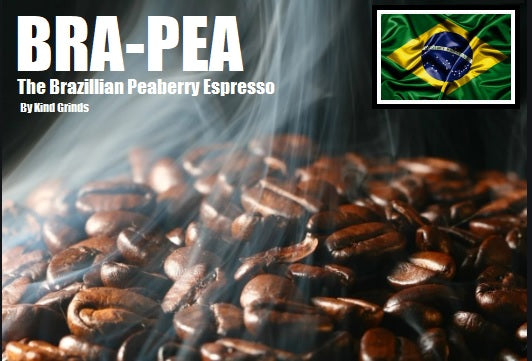SOE Single Origin Espresso – Ideal for Precision Brewing Methods
Checking Out the Rich Flavors of Coffee Beans: a Deep Study Coffee and Blended Coffee Beans
When you discover the abundant flavors of coffee beans, you uncover a complicated globe where each selection brings its very own character to your mug. As you navigate through the art of espresso and the creative thinking behind mixed coffees, you'll begin to value the subtleties that make each sip one-of-a-kind.
The Beginnings of Coffee Beans: Exploring Terroir and Taste Profiles
When you take a sip of coffee, you're not just delighting in a beverage; you're experiencing a rich tapestry of tastes shaped by the beans' beginnings. Each region generates special taste accounts affected by altitude, soil, and environment. Beans from Ethiopia typically break with bright, fruity notes, while those from Colombia often tend to provide a well balanced, nutty sweet taste.
As you explore various beginnings, you'll discover just how terroir-- the ecological factors impacting a plant-- plays a vital function - Single Origin Espresso. The very same coffee variety can taste considerably different depending on where it's grown
When you take into consideration these factors, you begin to appreciate the intricacy behind your mug. Each sip narrates of the land and the farmers that nurtured the beans. Following time you indulge, believe regarding the journey your coffee took before it reached your hands, and appreciate those intricate tastes that mirror its beginning.
Comprehending Coffee: The Art and Scientific Research Behind the Brew
When you consider espresso, it's not practically the strong flavor; it's also concerning the techniques that bring it to life. Comprehending just how different preparation techniques impact preference can transform your brewing experience. Let's check out the details of coffee preparation and uncover the special flavor profiles that make each cup special.
Coffee Prep Work Strategies
Coffee prep work is both an art and a scientific research, combining specific strategies with a deep understanding of coffee. To start, you'll wish to pick top notch, fresh baked beans and grind them finely for suitable extraction (Single Origin Espresso). The grind size is important; as well crude, and your coffee will certainly be weak, too great, and it'll be bitter
Next, tamp the grounds equally in the portafilter to assure consistent extraction. When you secure it right into the equipment, go for a brewing temperature between 190 ° F and 205 °
F.As you draw the shot, look for the best extraction time-- around 25-30 seconds. The outcome must be a rich, creamy espresso with a lovely layer of crema ahead. With practice, you'll understand these strategies.
Taste Profiles Described
The globe of coffee provides an abundant tapestry of taste profiles that can boost your coffee experience. You'll discover an equilibrium of bitterness, sweetness, and acidity when you take that first sip. Each espresso bean carries unique notes, from floral and fruity to nutty and chocolaty. Light roasts frequently showcase brilliant acidity and lively tastes, while dark roasts present deeper, bolder tones.
Recognizing these profiles helps you select the ideal coffee for your palate. Exploring with different blends can disclose surprising combinations. For instance, a well-crafted mix may integrate the intense notes of an Ethiopian bean with the rich, chocolatey undertones of a Brazilian bean. Accept the journey of uncovering espresso's diverse flavors, and you'll transform your coffee routine into an exciting adventure.
Processing Methods: Just How They Impact Flavor and Scent
While it could seem that the beginning of coffee beans is one of the most substantial consider determining their taste and aroma, the processing methods utilized post-harvest play an equally crucial duty. You'll discover that these methods can drastically alter the final taste account of your mug.
For circumstances, the washed procedure eliminates the fruit from the beans before fermentation, frequently bring about a cleaner, brighter taste. The all-natural procedure leaves the fruit undamaged throughout drying, resulting in a sweeter, fruitier account.
Other methods, like honey handling, strike a balance, allowing some fruit mucilage to remain, offering a distinct intricacy.
Each processing method connects with the beans' integral attributes, boosting or muting particular tastes and aromas. So, when you sip that espresso or combined coffee, keep in mind that the journey from cherry to mug is influenced not simply by beginning however additionally by exactly how those beans were refined.
Toasting Techniques: Opening the Complete Prospective of Coffee Beans
Roasting methods are crucial for exposing the complete capacity of coffee beans, as they transform raw, green beans into the aromatic, flavorful coffee you appreciate. The option of roasting method-- light, medium, or dark-- drastically affects taste profiles. Light roasts preserve the beans' all-natural acidity and fruity notes, while tool roasts equilibrium sweetness and splendor. Dark roasts, on the various other hand, emphasize strong, smoky tastes.
A slower roast at lower temperature levels permits for intricate flavors to establish, while a quicker roast can magnify anger. By grasping these strategies, you'll disclose a globe of flavor, elevating your coffee experience to new elevations.
The Magic of Blended Coffee: Producing One-of-a-kind Flavor Experiences
Developing an one-of-a-kind taste experience with blended coffee can transform your morning routine into an exploration of preference. By combining different beans from various regions, you can expose a symphony of flavors that elevate your cup to new elevations. Each mix offers a distinct account, stabilizing body, acidity, and sweetness to create something really unique.
When you pick a blend, you're not Single Origin Espresso just selecting a coffee; you're picking a trip across varied landscapes and societies. Explore various mixes enables you to find your personal favorites, whether you appreciate fruity notes or abundant, chocolatey touches.

Sampling Notes: Identifying the Nuances in Your Mug
As you drink your coffee, you could discover a spectrum of tastes dancing on your palate, each exposing the complexities of the beans. You might taste the brilliant level of acidity evocative citrus or the deep, rich notes akin to dark chocolate. The sweet taste could stimulate honey or sugar, balancing the overall profile perfectly.
Focus on the body of the coffee-- does it really feel airy and light, or is it complete and velvety? The surface, too, provides clues; a sticking around aftertaste may hint at nuttiness or floral touches.

Do not neglect to explore the special features of different beginnings, as each region gives unique flavors - Single Origin Espresso. Ethiopian coffees typically existing fruity notes, while Colombian beans could showcase an extra rounded sweet taste. By identifying these nuances, you'll deepen your appreciation for every mug, boosting your coffee experience to brand-new elevations

Brewing Approaches: Making The Most Of Taste Extraction for each Bean
When you discover the numerous brewing approaches, you'll discover that each technique can significantly influence the flavor profile of your coffee. From French press to pour-over, each technique extracts different substances, enhancing or silencing certain notes. As an example, utilizing a French press allows oils to stay in the mixture, developing a richer taste, while pour-over stresses quality and brightness.
Temperature level and grind dimension additionally play crucial duties. A coarser work works best for cold brews, while a fine grind is perfect for coffee. Try out water temperature level-- between 195 ° F and 205 ° F-- can expose hidden flavors, as well.
Don't forget soaking time; a fast extraction can result in sour notes, while over-extraction may produce bitterness. By changing these variables, you can make best use of taste removal and genuinely raise your coffee experience. Delight in the trip of discovering what method ideal fits your taste!
Often Asked Inquiries
What Is the Suitable Water Temperature for Developing Coffee?
The perfect water temperature level for brewing coffee's between 195 ° F and 205 ° F. If you make use of water that's too warm, you'll over-extract tastes; also cool, and you won't extract enough. Go for that wonderful area for the finest mixture!
Just How Does Grind Size Affect Coffee Taste?
Grind size substantially affects coffee flavor. Better grinds essence extra oils and tastes, resulting in a bolder taste, while coarser grinds return a lighter flavor. Changing grind dimension aids you achieve your preferred coffee account.
Exist Health Conveniences Associated With Alcohol Consumption Coffee?

What Is the Difference In Between Arabica and Robusta Beans?
Arabica beans are smoother and sweeter, typically including fruity tastes, while robusta beans are more powerful with a bitter taste and greater high levels of caffeine web content. You'll discover these distinctions in scent and developing experience.
How Can I Store Coffee Beans for Quality?
To store coffee beans for quality, keep them in an airtight container, away from warmth, light, and wetness. If you only grind what you require right before developing., you'll maintain their flavor much longer.
Discovering the Abundant Flavors of Coffee Beans: a Deep Dive Into Coffee and Blended Coffee Beans.
When you discover the rich flavors of coffee beans, you discover a complex globe where each range brings its very own character to your mug.When you take a sip of coffee, you're not simply appreciating a beverage; you're experiencing a rich tapestry of flavors shaped by the beans' beginnings.Roasting strategies are essential for revealing the complete capacity of coffee beans, as they transform raw, eco-friendly beans into the aromatic, delicious coffee you take pleasure in.As you sip your coffee, you could observe a range of tastes dancing on your palate, each revealing the details of the beans.